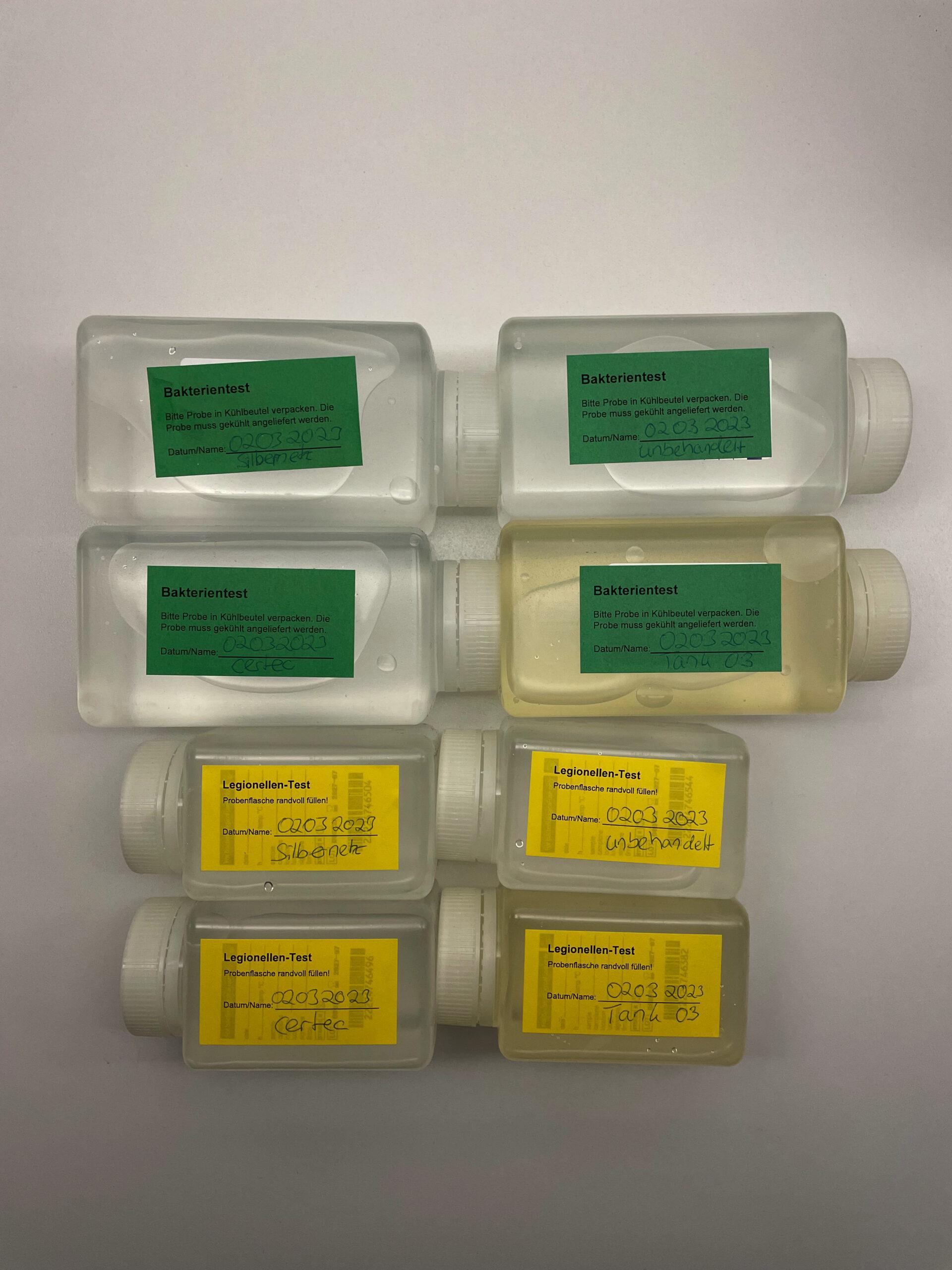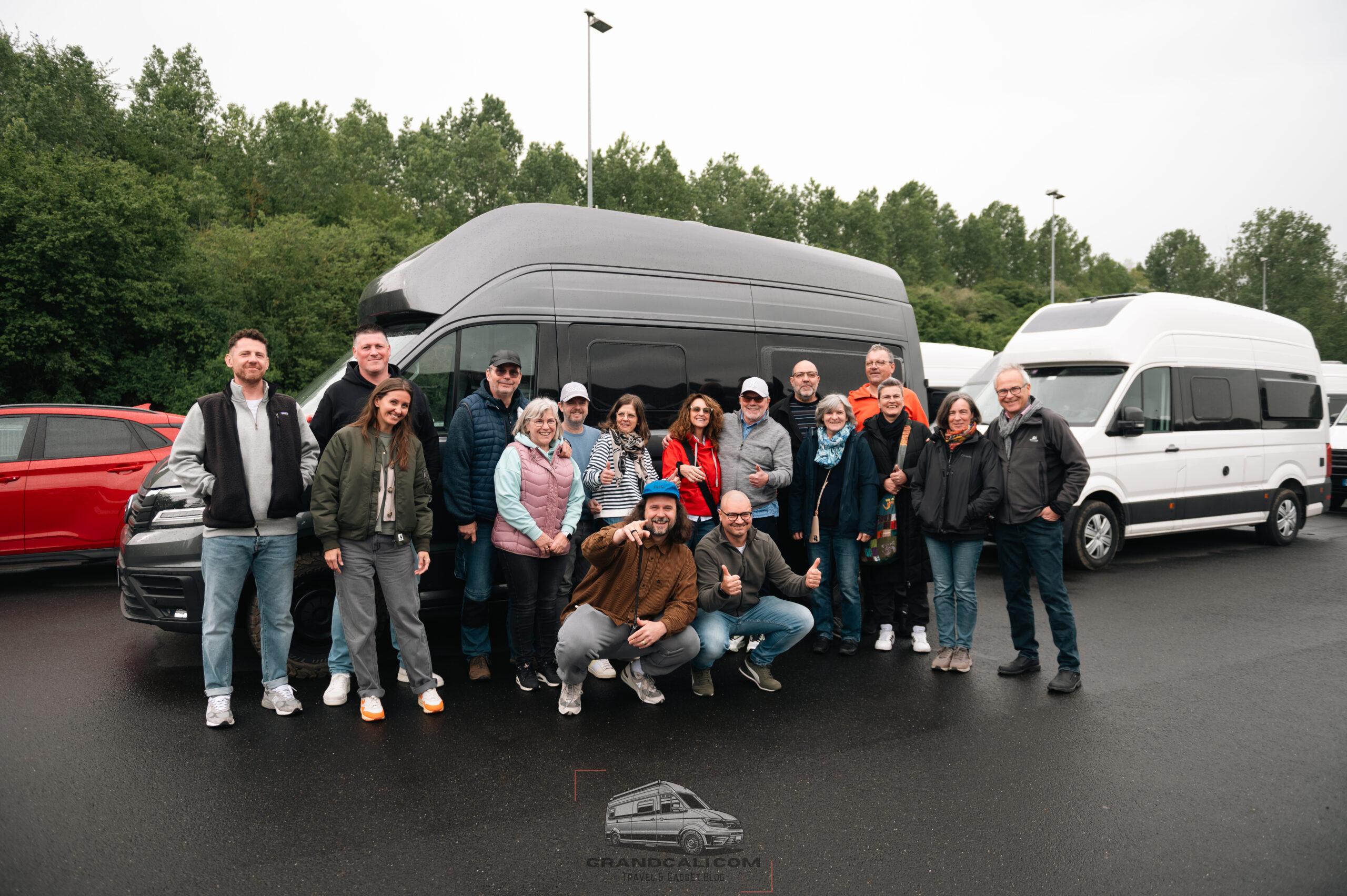We have always been plagued by the question of how best to conserve the water in our Cali so that it will last as long as possible, maintain drinking water quality and not form deposits in the tank and pipes.
After many opinions and little evidence to support the opinions, we decided to test it ourselves and have the water samples analyzed by a laboratory.
One piece of information beforehand, we were not paid by any company for these tests. The analyses are completely financed by us!
What products have we tried?
In our comparison, we wanted to test the two most used preservatives and a device that promises a lot.

The manufacturer writes about the function:
Certec® 3in1 is a preservative product with a preventive effect. It protects drinking water from germs and inhibits bio “lm formation in fresh water systems. The Bioelectro Depot ensures that negative ions and bioelectricity are released in a self-regulating manner – automatically with each new tank filling. These negativons attach themselves to the germs in the water. Thus, the sto exchange is inhibited, the new DNA formation is disturbed and the cell membrane is damaged. Instead of forming a colony and reproducing, the germs starve. The microspherical labyrinth structure of the Certec® 3in1 ceramic resembles an eective surface of approx. 1050 m#. Since bacteria follow chemical and electrical signals to form colonies and prefer the largest surface that can be colonized, the ceramic acts as an attractor. This creates an attraction effect, which is additionally strengthened by the negative ions and bioelectricity. Inactivated bact- ria are permanently retained in the deep structure and additionally neutralized by the sharp edges of the ceramic.

The manufacturer writes about the function:
In the case of silver, it is the positively charged silver ions that dock onto the microorganisms (e.g. pathogens such as Legionella, E.Coli, etc.) and disrupt the metabolism of the bacteria or lead to cell death in over 30 different mechanisms of action. They act microbially and have a unique long-term effect unlike any other active ingredient on the market. Products based on chlorine or e.g. hydrogen peroxide cannot be “bound” in water, volatilize and are therefore unsuitable for preservation.

The manufacturer writes about the function:
Tank-O3 fresh water system is a small built-in system for the fresh water tank. Based on electrolysis, oxygen (O2) is converted into ozone (O3). Because ozone is an extremely powerful, odorless, tasteless, and non-hazardous oxidizer due to its minimal production, the Tank-O3 fresh water system ensures that the water in the tank and pipes, as well as the fresh water tank itself, remains completely germ-free. Tank-O3 fresh water system kills all bacteria, viruses, fungi and spores and ensures that the water tank remains completely biofilm-free. This is a unique feature that no other system can offer.
Test setup
To ensure that all products have the same chances, it was important for us to carry out the tests at the same time.

The test was carried out in boxes with a capacity of 18 liters. All tanks were cleaned, disinfected and filled with the same amount of water from the same source before filling.
After filling, the tested agents were placed in the water according to the instructions and, in the case of tank O3, additionally connected to an external power source.

Four boxes can be seen in the picture: So that we had a correct comparison between the test subjects, one box contained undertreated water directly from the tap. This allowed us to evaluate the effectiveness.
After two weeks of standing at a constant temperature, the samples were taken by us and sent to the Raiffeisen Laboratory Rhein-Ahr-Eifel according to instructions.

In the laboratory, the four samples were tested microbiologically and for legionella to determine their suitability as drinking water.
What was analyzed ?
The results of the microbiological examination are interesting for the assessment of whether the water is suitable as drinking water.
The following values were analyzed from all four samples:
– Input temperature
This is the sample temperature on receipt in the laboratory.
– Colony count at 22 °C & 36 °C
The colony count is an indicator of the general microbiological load of the water without any further indication of the presence of pathogens.
In each case, 1 ml of water sample is placed on a culture medium and incubated at 22 °C or 36 °C for 48 hours. The colonies that have developed are counted at 6 – 8x magnification. The incubation temperature gives an indication of the origin of the bacteria. At 22 °C, the majority of germs that occur everywhere in the environment grow, originate from the soil and can form post-germination or slimy coatings in pipelines. At 36 °C, heat-loving bacterial species develop, indicating putrefactive processes in the soil and possibly fecal matter. If the colony count at 36 °C incubation temperature is above the limit, the probability for the occurrence of Legionella is increased.
For both colony counts, the TrwVO has a limit of 100, i.e. a completely germ-free water is not necessary from a health point of view.
– Legionella
Legionella are heat-loving, rod-shaped bacteria found in moist soil and fresh water. They cannot survive in salt water. Legionella preferentially multiply between 25 °C and 45 °C. Like other bacteria, Legionella attach themselves to the finest pores/irregularities of the piping system and form a biofilm there. They also prefer oily coatings, such as those formed by manganese (e.g., from wells). The growth of biofilms is promoted by nutrients (e.g. in well water) , rubber materials (e.g. pull-out kitchen faucet), elastomers (e.g. plastic pipes) and silicones. Where water is not strongly heated and stands for long periods, they can then multiply en masse in biofilms and become a serious health problem.
Test result
In the end, the result surprised us: of the four samples sent in, one failed and was no longer suitable as drinking water after two weeks, but only met the standards for aquarium water. That was quite surprising for us.
Before we go into the results, one piece of information in advance. We filled all samples, completely the same, and cleaned the measuring cup between samplings. Contamination can only be caused by the product itself, for whatever reason, for example incorrect storage by the supplier.
The sample from Tank O3 had the lowest contamination and no microbiological contamination at all, followed by untreated tap water, with Certec coming in third. The only thing that failed the test was the silver mesh.
The value of the colony count at the silver net was 1043 CFU/ml, remember the limit is 100 CFU/ml. Thus, this sample was classified by the laboratory as unsuitable for drinking water.
All other samples were absolutely within the normal range and could have been drunk without any problems; biofilm formation was also ruled out at this value.
Every reader can now make a final assessment for himself, for us in any case it is certain: nothing more comes into our tank! We save the money for additives and rather go eat from it.
Download test results
If you are interested and would like to support us a little bit with the costs for this test, you can buy the detailed lab results for download via our store. With the purchase of the products, this test has cost us over 500 euros, so we would be very happy if one or the other would like to support us a little this way. 🙂
-

Water test results
Rated 0 out of 510,00 €Kein Mehrwertsteuerausweis, da Kleinunternehmer nach §19 (1) UStG.
Add to cart




